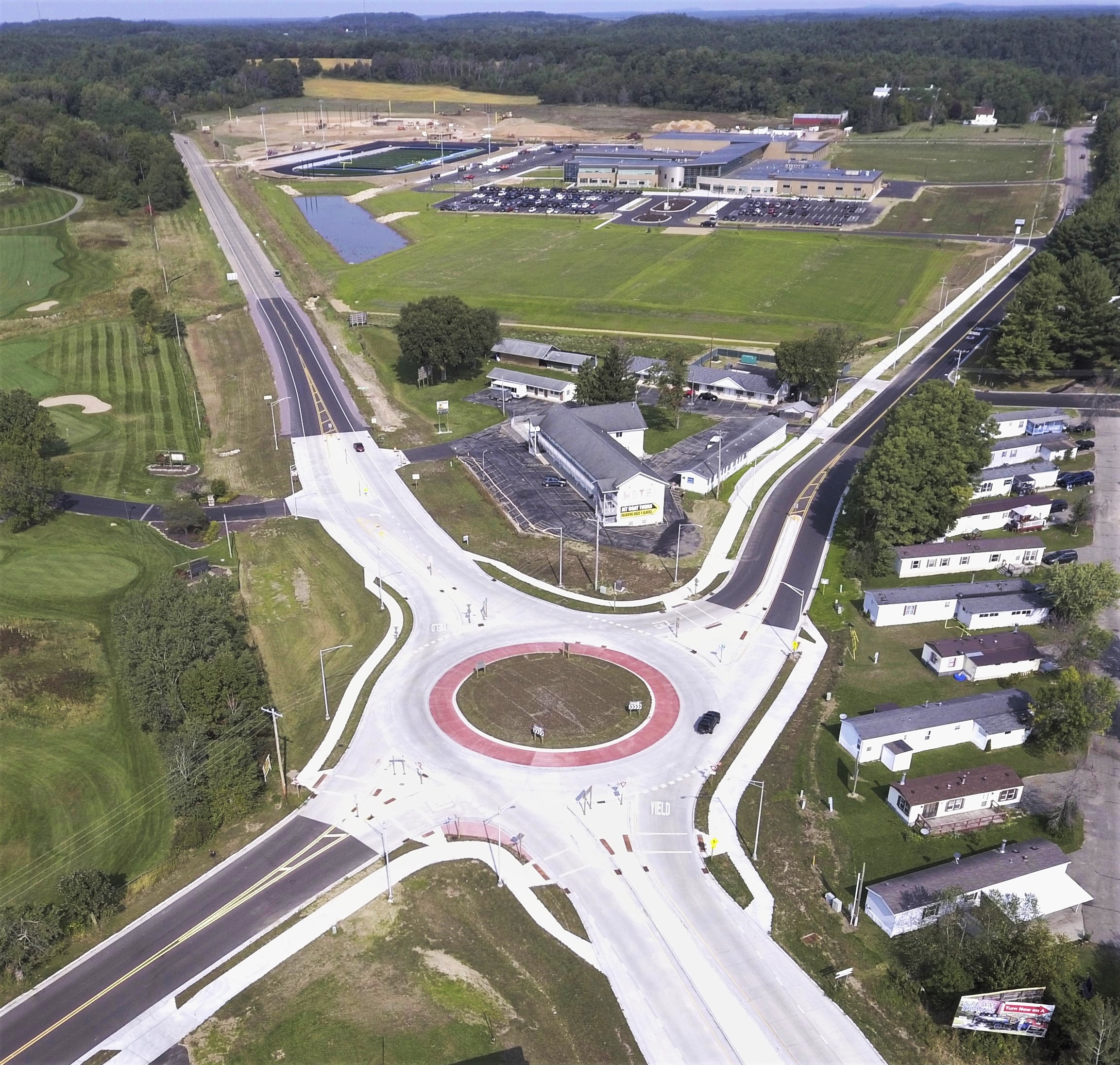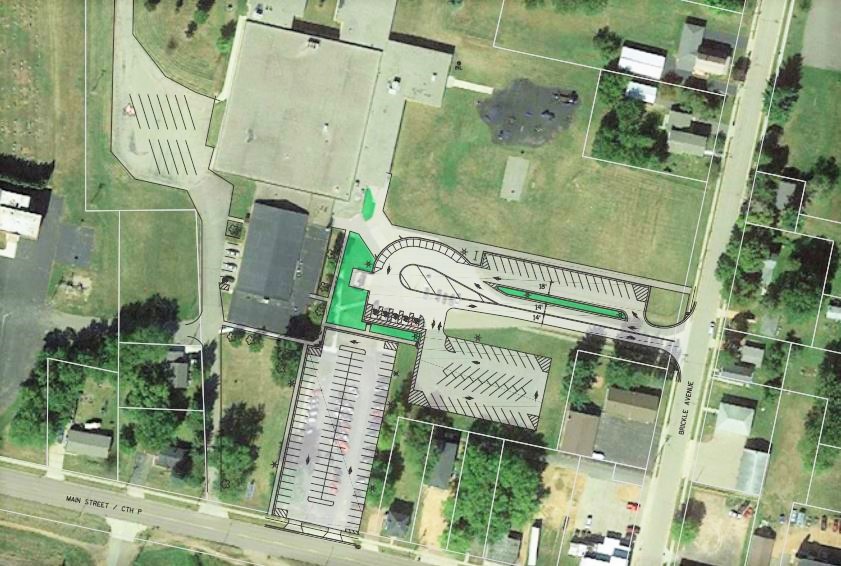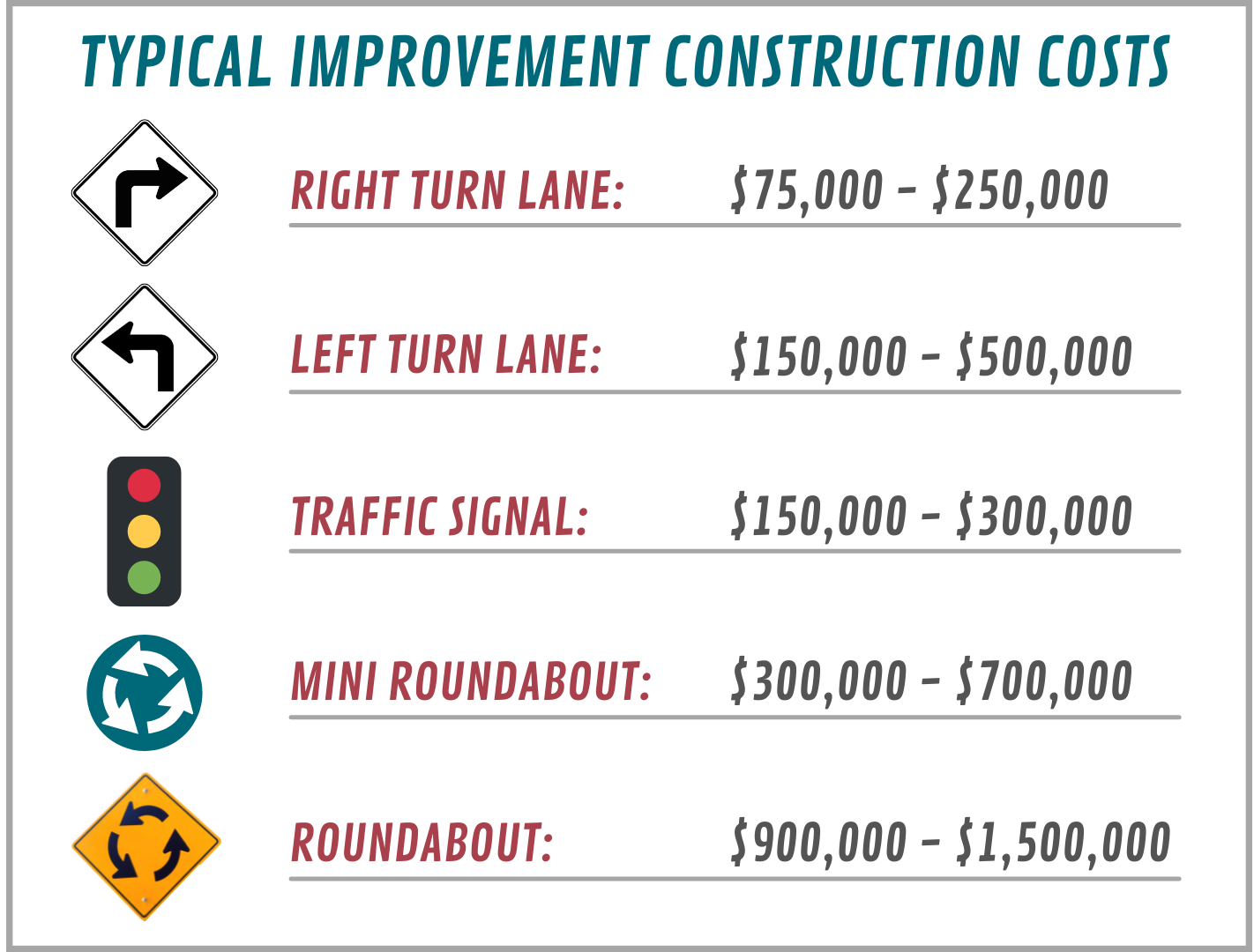When we talk about school planning and design, we very appropriately discuss the student experience inside the school building first.
What layout best funnels students through the halls, classrooms and common spaces? What mechanical systems are in place to provide the healthiest conditions and most efficient use of energy? What security measures are in place to protect these young people?
Yet, internal building function is just one component of a healthy and safe learning environment. As a transportation and traffic engineer, it’s my job to think outside of the school footprint and to analyze the entire surrounding area as one interrelated, holistic system. We look at traffic patterns and roadway conditions, adjacent travel corridors, intersections, signals, crosswalks, pedestrian and bicycle routes. We also critically analyze the zones surrounding the school building and how all forms of movement function throughout the space. Ultimately, it is our job to make these spaces as safe and user-friendly as possible, with room to accommodate expansion and growth.
There are a couple of key analysis tools that we as transportation and traffic engineers use in planning for new schools or upgrading existing ones: traffic impact analyses and site circulation analyses. These are important to utilize at the onset of the planning process in order to bring the school district’s vision to life and to ensure the vision is an honest match for the budgetary dollars set aside for the project.
Traffic Impact Analysis
A traffic impact analysis (TIA) is a comprehensive evaluation of both “before” and “after” operational traffic impacts to a road system as related to proposed development or redevelopment of property – such as building or renovating a school. It takes a close look at the traffic movement, volume and circulation of vehicles within the study area and helps identify capacity deficiencies, opportunities and solutions. It also evaluates the impact of the proposed development or redevelopment on the roadways in the immediate proximity of the project. The goal here is to take a broader, bird’s-eye view of the project site to ascertain how the transportation network functions as one cohesive unit and what infrastructure can be put in place now to accommodate growth and change in the future.

A traffic impact analysis identified this roundabout as a solution leading to the new Wisconsin Dells High School.
Schools have very unique characteristics compared to traditional businesses, as they see their peak daily traffic volumes occurring within two 30-minute windows – one in the morning, and one at the end of the school day. These peaks can be so significant that an intersection that operates efficiently even during times of the heaviest daily commuter traffic can be overwhelmed at the start or end of the school day. These overcapacity conditions result in vehicle queueing that blocks intersections – sometimes many intersections in a row along a transportation corridor. This blocking impedes the safe, effective use of traffic signals, tests drivers’ patience, increases the possibility of drivers making poor decisions, and can have a critical, negative impact on the safety of other vehicles, bicyclists and pedestrians along the path of transit.
This is where a traffic impact analysis comes in. A TIA should be conducted by a transportation professional with training and experience in traffic engineering and transportation planning. If the TIA is being completed for the state, it also must be prepared by or under the direct supervision of a professional engineer (PE) with experience in traffic engineering operations. Depending upon the complexity of the proposed school development or redevelopment, a TIA can take approximately 2-3 weeks to complete, but the entire process with government reviews and approvals can take up to 3 months. The final TIA report summarizes the study objectives, proposed development or redevelopment plans, existing traffic conditions and volumes, projected traffic volumes and routes, site access constraints, traffic queuing concerns, multimodal considerations, speed and sight distance evaluations, traffic control and signaling needs, and design considerations and recommendations.
One of the largest challenges to conducting a TIA is that, in most cases, authorities other than school districts have jurisdiction on the roads that access the school. It is these authorities that may require the TIA be completed if new access or permitting is being required or if existing access is being changed. This can result in road or intersection improvements that meet the operational and safety standards of these outside parties, but not necessarily the needs of the schools or school districts involved. This is why it is imperative for schools and district stakeholders to be involved early in the planning process, to make sure improvements align with their desire to provide safe and functional routes to and from a school – whether by bus, vehicle, bicycle, foot or any other mode of transportation.
Site Circulation Analysis
A site circulation analysis can be done in tandem with a traffic impact analysis for a new school or as a stand-alone project for an existing school. Here, we examine the movement and patterns of all modes of transportation within a school zone proper: parking areas, bus loading and unloading zones, student drop-off and pick-up areas, pedestrian and bicycle crossings, accessibility, and the interconnectivity between them all. Sidewalks, curb ramps and transit stops are evaluated. We look at pedestrian and bicycle count numbers to ensure safe, multimodal use throughout the school property. As part of the process, it is also important to perform an Americans with Disabilities Act (ADA) audit of all public right of way within the school zone to ensure full compliance and equitable access.

Example of a school site circulation analysis conducted by MSA.
The underlining reason to do a site circulation analysis is to make sure you are providing the safest environment possible for students, staff and parents. We generally follow four main industry principles while evaluating and providing recommendations at a school site.
- Separate Pedestrians, Vehicles and Buses: Provide separate areas for parent loading zones and bus loading zones; design parking lots for vehicles and pedestrians; and designate clear walking areas for pedestrians to reduce conflict zones.
- Organize the Student Loading Process: Educate students, staff and parents on the loading zone procedures for efficiency and enforcement of policies.
- Assign Parking Areas: Designate a short-term parking area away from the loading zones that parents walking students into the school can utilize, as well as other visitors, to make sure they do not interfere with loading operations.
- Restrict Circulation Options: Define a driver’s route into and out of the school campus to reduce delays and improve efficiency and overall safety.
Early Planning and Budgeting
Why is all of this important? Communities and school districts that take an early, proactive role in planning for new, expanded or renovated schools save on long-term costs and unforeseen expenses. And, earn the trust of their communities and the voters that help move projects forward.
An increasing number of school projects now go to public referendum and vote. And fortunately, many of them gain support. With safety always being a top school priority, it is highly recommended that districts who are anticipating site upgrades or have identified issues of concern pertaining to school zone circulation complete a site circulation analysis prior to a referendum being drafted so that improvements can be accurately accounted and budgeted for.

Average range of construction costs in the Midwest.
The cost of roadway improvements outside of the school zone can also catch districts off guard. As mentioned previously about TIAs, a local authority may require improvements to a public intersection prior to allowing any access or permitting for a school project. In most cases, construction estimates for the school-specific project include only minimal costs for associated roadway improvements – costs that may not have even been vetted at the time of the referendum. A simple modification such as adding a turn lane and widening the affected pavement, for example, can add up to well over $200,000 in cost. This is why we recommended that, while planning a referendum, a district discuss with the local authorities their desire for a TIA, and if required, have it completed prior to determining a final referendum cost. Construction budgets are always a challenge and costs can certainly fluctuate. However, trying to find an additional $500,000 to complete the improvements required for a safe intersection can be extremely difficult to do once a referendum has already passed. And, bringing the project back to the ballot in subsequent years can lead to referendum fatigue and the risk of losing critical voter support.
In order to do a school project the right way, without compromising quality or safety, school districts can — and should — take the lead on accurately planning, studying and budgeting for the right improvements at the right time.
Learn how our experience with traffic impact analyses and site circulation analyses can help move your next school district project forward by reaching out to Brian or connecting with an MSA expert near you!
